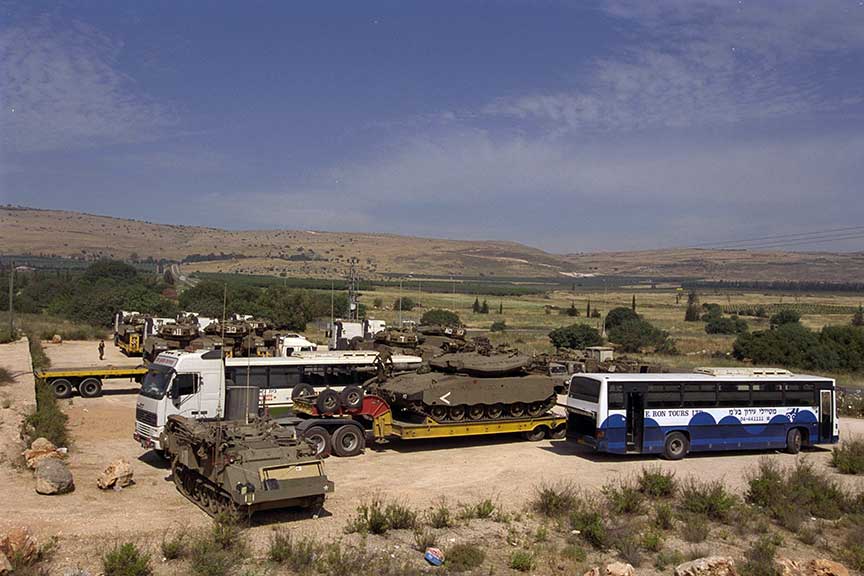2000 Israel Withdraws from Lebanon

On May 24, 2000, Israel withdrew from Lebanon. The withdrawal was unilateral and Israeli forces withdrew overnight to the blue line, the official UN border between Israel and Lebanon.
Israel first entered Lebanon in 1982 in the First Lebanon War. It has moved back to a twenty-kilometer security zone in Southern Lebanon. One of Prime Minister Barak’s election promises was to withdraw Israeli troops from Southern Lebanon, where they were being attacked on an almost daily basis by Hezbollah. Barak’s preferred method was to reach an overall peace agreement with Syria. Barak believed that the outlines for that agreement were clear, and if achieved, it would put additional pressure on the Palestinians to compromise and reach an agreement. It would also provide Israel with a means of withdrawing from Lebanon, which was under Syrian influence. Israelis and Syrians met at Shepherdstown West Virginia but once details of their talks leaked any chance of agreement seemed to slip away. President Clinton met with Syrian President Assad in Geneva, but Assad who was in failing health demanded that any deal would allow him to sit on the shores of the Lake of Galilee. Clinton called Barak and said, “Ehud, it’s not going to work.” That was the end of the Syrian track.
Barak then decided that only a unilateral withdrawal from Lebanon was possible. On May 23, 2000, the order was given to withdraw. Israel would have preferred a gradual withdrawal, but the fear was that Israeli troops would be vulnerable during the retreat. So the withdrawal took place overnight without warning to Israel’s Lebanese allies in southern Israel. Most of them became refugees in Israel after the departure. On June 16 the UN certified that all Israeli troops had withdrawn to the blue line- the international border.
